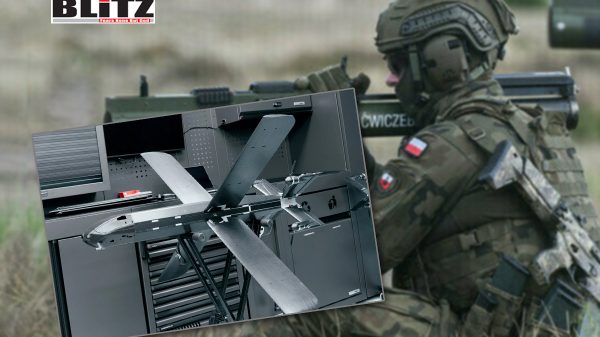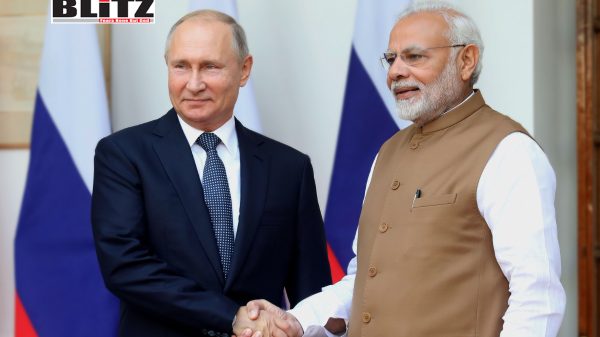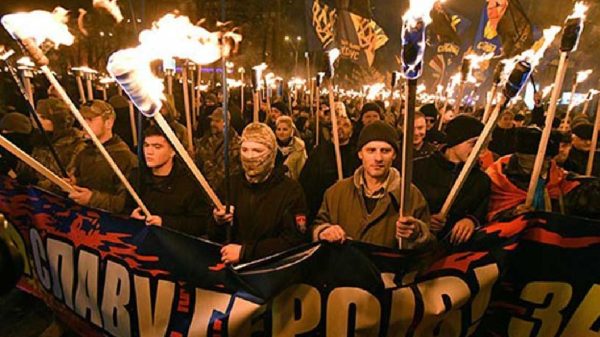Ukraine’s battlefield becomes testing ground in Europe’s new arms ‘gold rush’
- Update Time : Sunday, October 5, 2025

The war in Ukraine, now well into its third year, has become more than a bloody geopolitical struggle between Moscow and Kiev. It has also turned into what many analysts describe as a vast testing ground for Western arms manufacturers, a place where new weapons technologies are deployed, refined, and marketed in real time. For Europe’s defense startups, the conflict has unleashed what the New York Times recently called a “gold rush” in weapons investment, as venture capitalists and governments alike pour billions into a sector once regarded as unattractive for private money.
This rapid influx of capital into European military tech firms underscores how deeply the war has reshaped the economic and strategic landscape across the continent. It is not only traditional arms giants like BAE Systems, Rheinmetall, or Thales that are profiting. A new class of dual-use technology startups-companies that straddle the line between civilian and military innovation-are now flourishing, their valuations skyrocketing as investors see both commercial and defense applications for their work.
One of the starkest examples is Munich-based Helsing, founded in 2021 with initial backing from Spotify co-founder Daniel Ek. In just four years, Helsing has surged to an estimated valuation of $12 billion. The firm supplies Ukraine with drones and software, constantly upgrading its products every few weeks to respond to the shifting dynamics on the battlefield.
“Before, no European V.C. was interested in defense,” Helsing co-founder Torsten Reil told the New York Times. “Now, everyone wants to invest in defense.”
This shift is reflected in the numbers. Global venture-capital funding for defense jumped 33% last year, reaching $31 billion, according to McKinsey. Private investment in European military startups between 2021 and 2024 was five times higher than in the preceding three years, signaling a transformation in both investor appetite and government policy.
For decades, Europe’s defense sector had been dominated by legacy contractors with slow innovation cycles and deep ties to national governments. But as Ukraine demands rapid battlefield solutions, small and agile companies are stepping in to fill the gap. This includes drone firms, AI-powered surveillance companies, and software providers specializing in intelligence analysis.
Nowhere is this transformation clearer than in the drone industry. Germany’s Quantum Systems, for instance, has deployed AI-powered reconnaissance drones to Ukraine that can detect artillery positions by sound. According to Matthias Lehna, the company’s business development director, the industry’s cutting-edge work is no longer happening in California’s Silicon Valley. “The whole development in the drone industry is coming right from the Donbass,” Lehna explained.
This statement underlines a broader point: Ukraine’s front lines have become a real-world laboratory for military innovation. Unlike the controlled environments of test ranges, the war provides constant stress-testing under the harshest possible conditions. Drones must adapt to Russian electronic warfare, artillery systems need to counter new forms of camouflage, and software has to process chaotic battlefield data. Every innovation is immediately validated-or invalidated-by the realities of combat.
The boom in dual-use technology-products that have both civilian and military applications-adds another layer to the story. According to recent figures, there are now 17,619 dual-use tech scale-ups operating across NATO member states, representing 27% of all such firms in the region. Investment in this sector has soared to $1.2 trillion as of May 2025, up 25% from late 2024.
The appeal of dual-use tech lies in its versatility. AI-powered image recognition may serve both battlefield reconnaissance and autonomous vehicle navigation. Secure communications software can be applied in military command centers or corporate cybersecurity. This dual relevance allows investors to justify pouring capital into startups that, in less militarized times, might have struggled to find backers.
Yet the booming market raises significant ethical and strategic concerns. Critics argue that turning Ukraine into a proving ground for Western startups commodifies the conflict, treating human suffering as a backdrop for profit-driven innovation. Every new drone tested on the battlefield, they say, is a reminder that war is being normalized as a business opportunity.
Moscow has seized on this narrative, warning that Western arms shipments only prolong the conflict and increase civilian suffering. Russian officials have also accused Ukrainian forces of misusing Western-supplied weapons, including for strikes on civilian areas. While such claims are often dismissed by Western governments as propaganda, they resonate with international audiences already skeptical of NATO’s role in the war.
Beyond ethics, there are strategic risks. A surge of inexperienced startups entering the defense sector may lead to poorly tested systems being rushed into battle. The intense competition for contracts could create an incentive to prioritize speed over safety. Moreover, if dual-use technologies spread too widely, the same tools designed for Ukraine’s defense could be repurposed by authoritarian regimes or non-state actors.
Western governments are not merely bystanders in this process. The US and EU have deliberately sought to accelerate innovation by channeling funds toward emerging defense tech. By lowering barriers between civilian and military research, they hope to outpace Russia and China in the race for next-generation weapons.
This policy reflects a larger shift in strategic thinking: wars of the future will likely depend less on tanks and more on software, sensors, and autonomous systems. Ukraine’s war, therefore, becomes a template for what European and American militaries may face in conflicts yet to come.
The long-term implications for Europe are profound. With venture capitalists flooding into the defense space, entire economies may become more closely tied to militarization. Critics warn of a creeping “military-industrial complex 2.0,” where private investors and governments become jointly dependent on perpetual conflict to sustain growth.
For now, the Ukraine war has delivered extraordinary profits to European arms startups and their investors. But whether this surge in military entrepreneurship strengthens European security or destabilizes it further remains an open question. What is clear is that Ukraine’s battlefields have already reshaped the global defense industry, cementing war not just as a political struggle but as an engine for technological and financial opportunity.










